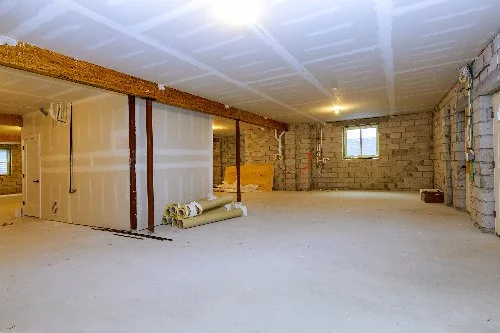How to Bring Your Basement Back From a Watery Grave
A basement flood can be a homeowner's worst nightmare, but with proper knowledge and preparation, you can successfully navigate it. In this guide, we will discuss five critical steps that every homeowner should take when facing a flooded basement—prioritizing safety, thoroughly removing water and moisture, cleaning and disinfecting all surfaces, waterproofing for the future, and repairing any damages caused by the flood. By following these steps and seeking professional assistance, you can confidently restore your basement to its former dry and safe state.
Safety First
During a basement flood, it’s important not to jump into cleanup mode once the water starts receding. The top priority should always be safety. One of the first steps a homeowner can take is to turn off the power to the basement to avoid any electrical hazards. It’s also important to wear the proper protective gear, such as rubber boots and gloves, to prevent any contact with contaminated water. If the water level is high or if there are any structural issues, it’s best to call a professional for assistance. Don't hesitate to put safety first to ensure a safe and successful cleanup.
Remove the Water
With keeping safety in mind, removing any standing water as soon as possible is still important. Failure to do so can lead to serious consequences, including mold growth and structural damage. Fortunately, several ways to remove water from your basement include using a wet/dry vacuum, pumps, or even buckets if the area is small. But it's not enough to remove the water - it's crucial that you dispose of it properly to avoid contaminating sewage systems or nearby bodies of water. By removing excess moisture, you'll prevent further damage and protect the health and safety of those living in your home.
Dry Out
When water damage strikes, it's important to act quickly to prevent further damage to your property and health. Removing the water is just the first step; the next crucial step is drying out the affected area. Proper ventilation fans and dehumidifiers can help speed up the drying process, but industrial-grade equipment may be necessary for larger areas or extensive damage. Ignoring the necessity of thoroughly drying out the space can lead to mold growth and unpleasant odors, which can negatively impact your health and the value of your property. Take the necessary steps to completely dry out the affected area and ensure your safety and well-being.
Clean and Disinfect
In the aftermath of a flood, cleaning and disinfecting your home is crucial in ensuring your and your family's safety. Floodwaters can contain harmful bacteria and pathogens that pose a risk to your health. To effectively kill these microorganisms, it's recommended to use a solution of bleach and water or a commercial disinfectant. Pay special attention to all surfaces that come into contact with the floodwater, including walls, floors, and furniture. It's important to remember that flood damage can be extensive and may require the help of a professional restoration company. Don't hesitate to reach out for assistance and prioritize the safety of your home and loved ones.
Waterproofing
When it comes to preventing future flooding, waterproofing your basement is essential. Sealing any cracks in the foundation, installing a sump pump, or improving drainage around your home can help protect your space from water damage. To ensure that you are taking the right steps for your specific situation, it's important to consult with a professional, someone like J & D Waterproofing. They can recommend the best options for your home and provide expert advice on keeping your basement safe and dry. By investing in waterproofing measures, you're protecting your property and gaining peace of mind, knowing that you're taking proactive steps to prevent future flooding.
Repair and Remodel
Following a flood, repairing any damage the water may have caused is critical. This could involve replacing flooring, drywall, or furniture that has been ruined. However, the aftermath of a flood also provides a unique opportunity to remodel your basement to prevent future flooding. By making necessary improvements to the layout and design, you can significantly reduce the risk of flooding in the future. Whether you opt for a French drain or sump pump, numerous options can help keep your basement dry and safe.
You might also consider reaching out to a remodeling company that specializes in basements, like AJN Building & Remodeling. They can offer expert advice on the best waterproofing methods and help you create a functional and attractive basement space that is resistant to flooding. Don't let a flooded basement hold you back from making the most of your home's potential.
Dealing with a flooded basement can be overwhelming and stressful, but following these five critical steps will help you successfully bring your basement back from a watery grave. Remember to prioritize safety, remove water and moisture thoroughly, clean and disinfect all surfaces, waterproof your basement for the future, and repair any damages caused by the flood. With proper knowledge and an action plan in place, you can conquer any water damage situation like a pro.


